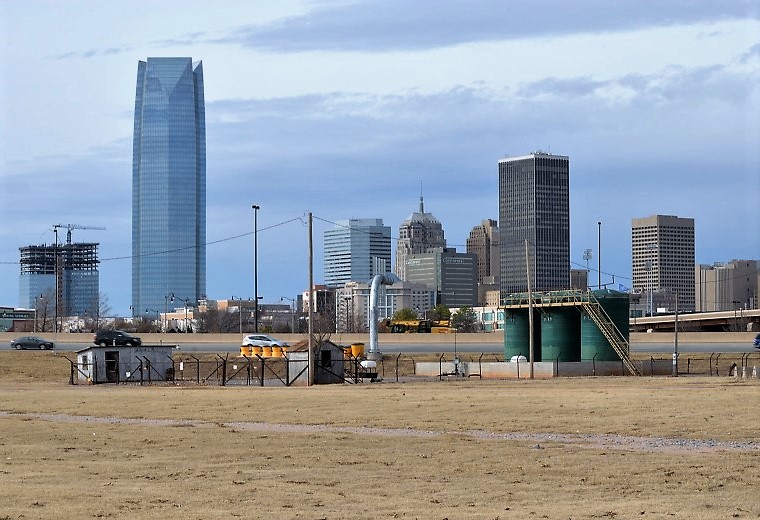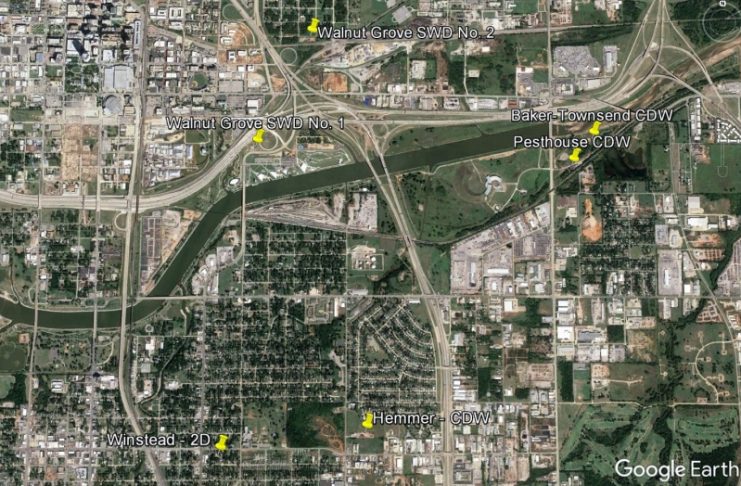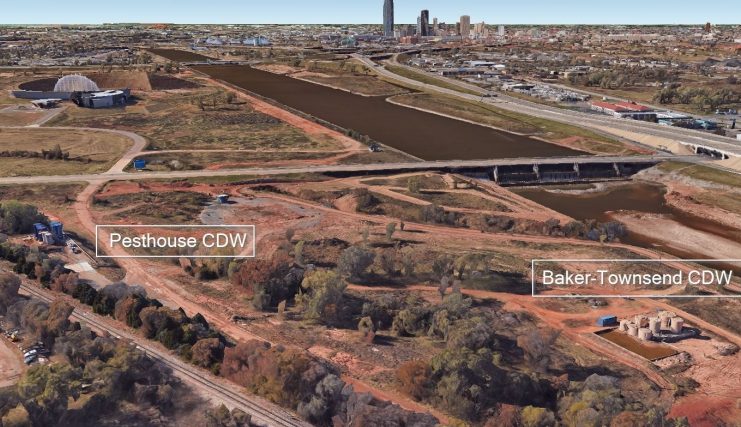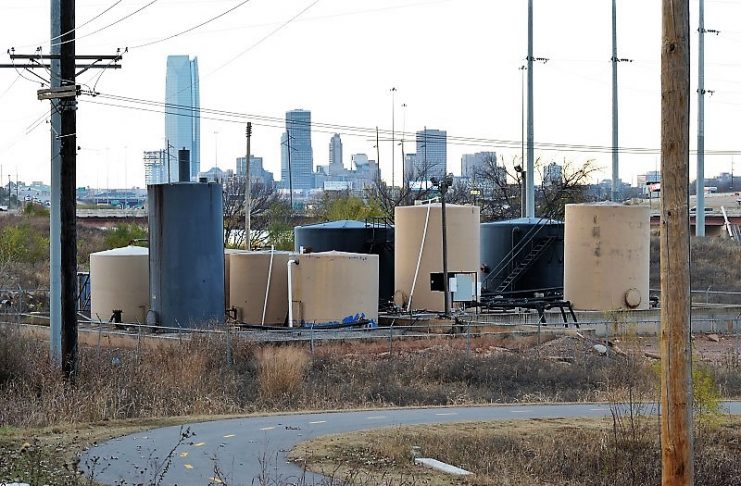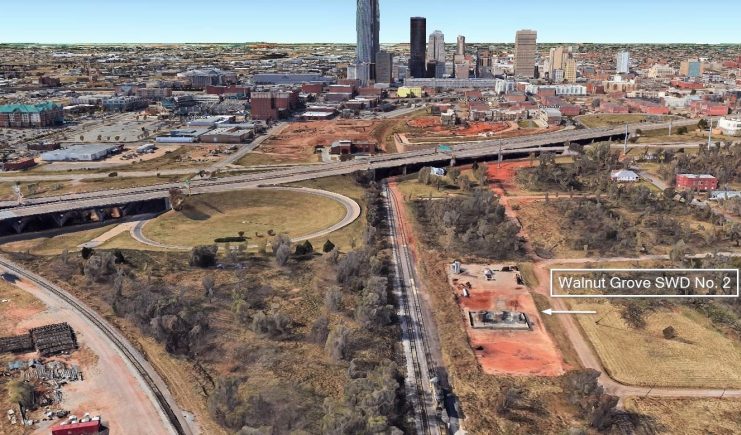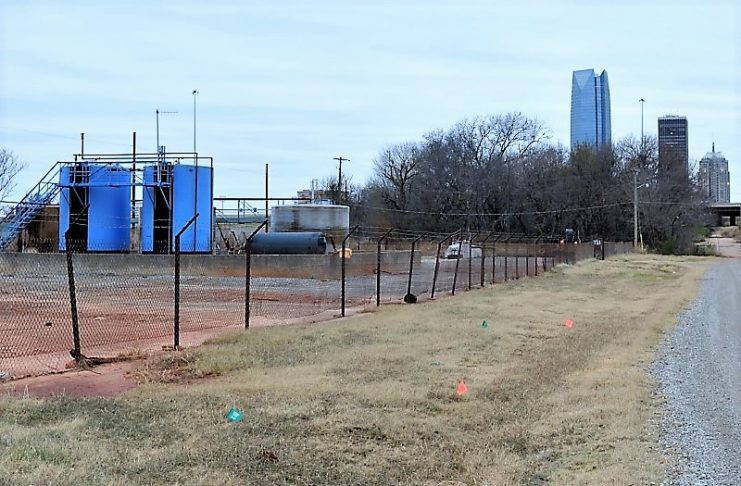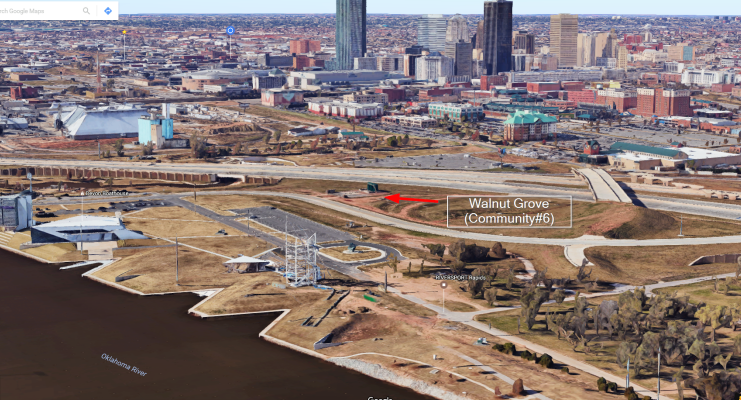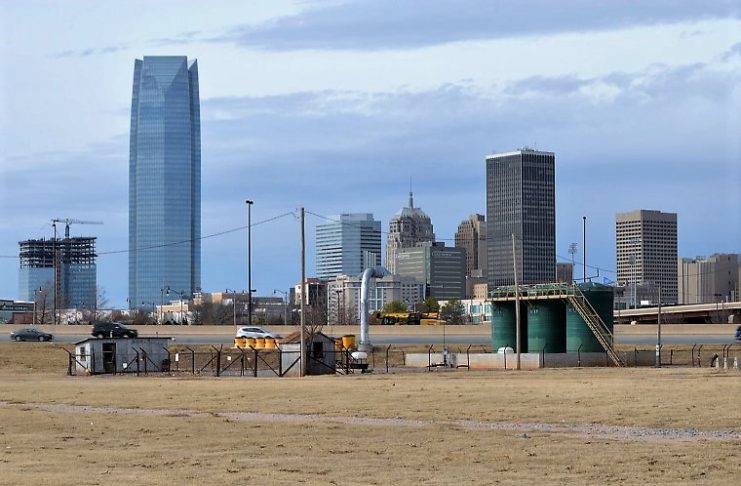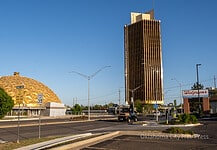Last Updated on August 3, 2017, 7:31 AM | Published: January 13, 2017
Six active disposal wells of the type thought to cause earthquakes are within 2.5 miles of Oklahoma City’s 50-story Devon Tower.
Two of those six wells are only 1 mile east of the tower.
And, one major fault line – the Nemaha – runs along a rough north/south line between I-35 and downtown directly below those wells.
The six wells inject fluid into the unstable Arbuckle formation, the one that has been the source of most of the earthquakes in Oklahoma over the last five years.
Free Press investigated the numbers, names, and locations of the wells from detailed Oklahoma Corporation Commission records.
Locations of the wells were plotted by using GPS coordinates listed in OCC records and confirming them with official signage posted at the well sites.
Earthquakes downtown?
Does that combination add up to Oklahoma City possibly experiencing earthquakes of its own in the future?
So far, the city has only felt the shock waves of earthquakes occurring a distance from the city’s center.
When that happens, it frightens residents. But so far significant damage has been limited to the east of Edmond and further north.
Indeed, the most damaging quakes have been in the northern parts of the state. The largest magnitude quake of 5.8 occurred Sept. 3 of last year near Pawnee.
So, most would not fault city residents for being somewhat confident that we are not in danger as far south as downtown.
But should we be that confident?
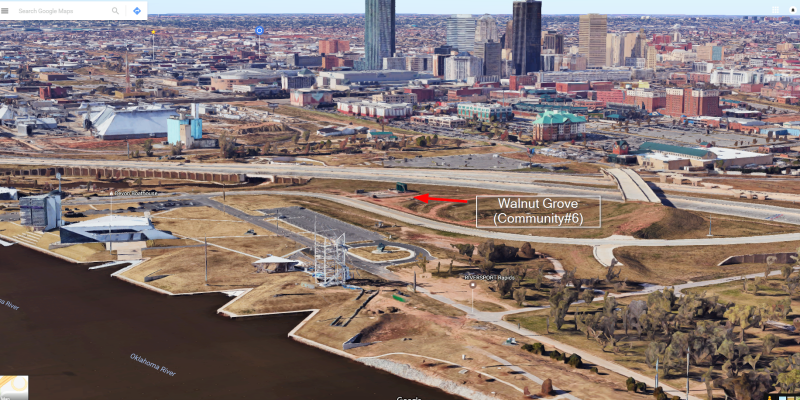
Injection wells
To understand why some might be concerned about the proximity of Arbuckle formation disposal wells close to downtown, it’s important to know what scientists are saying about how drilling-related wastewater disposal injections are causing earthquakes.
After several years of questions being raised by earthquake victims and numerous publications, scientists and OCC now agree that disposal wells have been the primary cause of increased numbers of earthquakes in Oklahoma.
Disposal injection wells across the state have deposited waste water into several different formations, but Stanford University and Oklahoma Geological Survey scientists found that disposal injections into the Arbuckle formation have been the most problematic.
Those deep, ancient formations have always had fractures and fault lines. What’s new is the injections of hundreds of thousands of barrels of waste water.
Recent research released by Stanford scientists in November of last year seems to show that reducing the volume of injections into the wells can have a significant effect on the size and frequency of earthquakes.
Earthquakes
Free Press spoke by phone to Jefferson Chang, a geologist for the University of Oklahoma and OGS.
This is how he described the effect that excessive underground injections have on seismic activity in Oklahoma.
Let’s say you have a car parked on a hill. Gravity is trying to drive that car down, but the friction between the tire and the street is keeping it still. So, an injection well is if you are injecting water between the tire and the street. You are going to lift that car up and let it slide down and let gravity take over. That’s what’s going on with injection well induced seismicity.
When asked if the Nemaha fault is in danger of slipping and creating damaging earthquakes near downtown because of the injection wells he was cautious.
Chang said that it could happen, but it was less likely because of the ways tectonic forces are working under Oklahoma.
“From what we’ve seen from the seismicity that we’ve had over the last few years, most of the faults that are slipping are only oriented eastish-westish,” Chang said. “The Nemaha fault is roughly about north and south.”
He said the “driving tectonic force is going roughly east and west.”
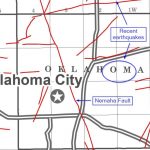
“So, if your fault is oriented perpendicular to that it actually clamps it,” said Chang. “That’s not to say that it’s never going to slip. There is a fault there. It’s slipped before. But it’s highly unlikely.”
He pointed out that the recent earthquakes east of Edmond were not along the Nemaha, but another fault line running mostly east-west.
Earthquakes across the state, however, continue to pose a threat to property and people.
Numbers are provided by the state’s Earthquakes in Oklahoma website. Only earthquakes of magnitude 3 or above are included. Most of these earthquakes are thought to be 5 km, or 3.1 miles deep.
- 2013 – 109
- 2014 – 579
- 2015 – 903
- 2016 – 623
For 2017, the site reports 8 earthquakes of magnitude 3 or larger. The closest one to Oklahoma City so far was magnitude 3.5 January 2.
Why injection?
Much of the drilling for oil and gas in Oklahoma over the last decade has produced large volumes of brackish water.
Some types of drilling involved flooding a formation to get the last of the oil out, and the water would then come back out with the oil.
In other cases, the formations producing the oil also had sizable quantities of water in them which came out with the oil.
But the Environmental Protection Agency (EPA) would not allow the water to be disposed of on the surface because it contained large amounts of salt and other damaging substances, including the chemicals used in the drilling process itself.
And so, at first the injection disposal well was thought to be a safe way of disposing of the waste water deep below the water table and producing oil/gas zones.
Drilling companies found that the Arbuckle formation would accept large amounts of wastewater because it is more porous. The science is still unclear about why that formation seems to be more porous than others.
Problems occurred when waste water disposal injections began to create lubrication of sorts that allowed ancient fractures to open and start moving. The movement then produces an earthquake.
Jurisdiction
Disposal wells are under the jurisdiction of the Oklahoma Corporation Commission which regulates oil and gas production along with many other aspects of business in Oklahoma. The EPA also has jurisdiction over some of those same wells.
The commission has flexed its regulatory muscle more often recently as the increasing frequency and intensity caused more public interest and protest from citizens.
A recent example was when the OCC ordered 32 disposal wells closed following the 5.8 earthquake in Pawnee using its emergency authority granted by the Oklahoma Legislature in the last session.
The OCC’s regulatory confidence has been bolstered by a much closer relationship with the OGS in the last several years as a scientific resource.
The commission has delivered its regulatory data to the OGS which in turn generates the science that guides OCC’s actions.

City regulation?
City Councilman Ed Shadid recently implored the council to take some sort of action on the wells and earthquakes, but to no avail. He said an earthquake could be “catastrophic for the City of Oklahoma City.”
During the session, city manager Jim Couch responded that the city “actually sent a whole team to FEMA” (Federal Emergency Management Agency) for training on how to respond to earthquakes.
Kristy Yager, Public Information Officer for the City of Oklahoma City, told Free Press that the city used to have oil and gas inspectors for all kinds of wells within Oklahoma City limits, but now they don’t.
Oklahoma City ordinances and inspectors who enforce them are focused on the surface sites and making sure that they are fenced for safety, and not creating a nuisance for neighbors.
But the city depends on the OCC for enforcement of what goes on beneath the surface.
“On the whole, city staff believe the state Corporation Commission is better suited to handle the underground part of regulating exploration and injection wells in Oklahoma City,” Yager said.
All aerial perspectives are screen captures from Google Earth with mark-up by Free Press.
Founder, publisher, and editor of Oklahoma City Free Press. Brett continues to contribute reports and photography to this site as he runs the business.
